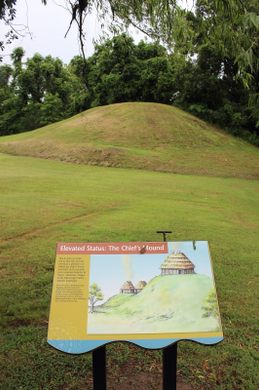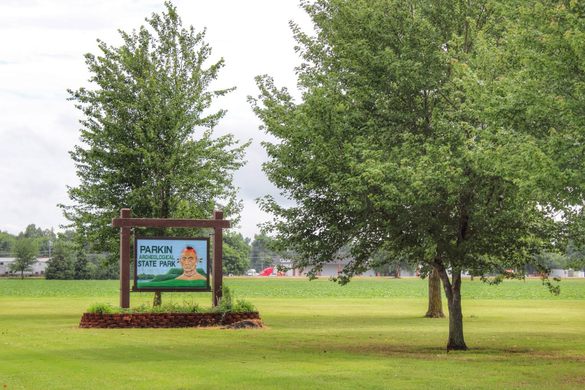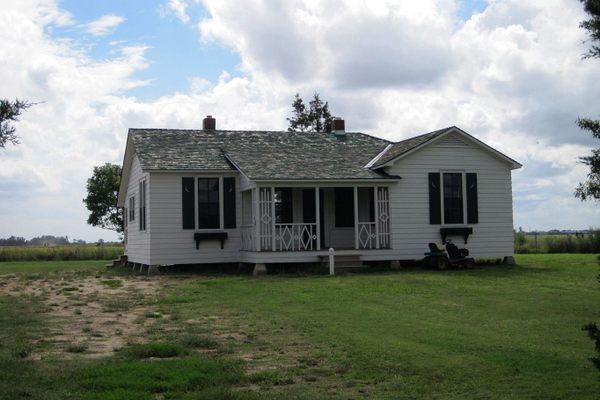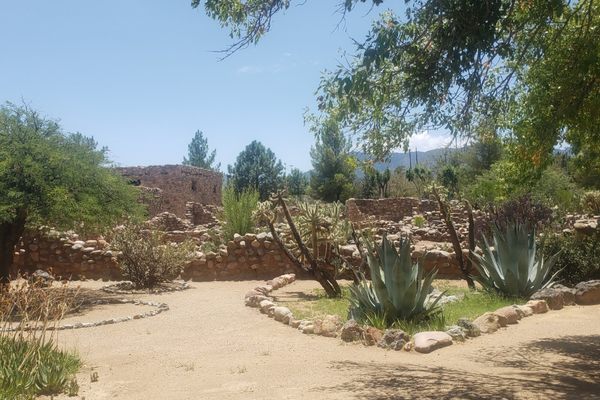Parkin Archeological State Park
The scant remains of an expansive indigenous civilization can be seen at this Arkansas state park.
About a half hour west of Memphis, tucked up against the St. Francis River, is one of the most significant archaeological discoveries in the American South — indeed, very likely one of the most significant in the entire United States.
Parkin Archeological State Park in eastern Arkansas is home to what many scholars believe to be the Native American village of Casqui, chronicled in the expedition of Hernando de Soto in 1541. Various European-made trade items from the era recovered at the site, along with descriptive text within the journals of Hernando de Soto, appear to support the idea.
The Mississippian population flourished at the 17-acre site from as far back as 1000 CE, but met its demise shortly after the visit by Hernando de Soto. While the encounter stands as one of the few friendly contacts recorded between Europeans and natives, it is likely the inhabitants of Casqui succumbed to disease the Europeans had grown immune to, but still carried. Artifacts recovered at the site indicate a once-prosperous community. A large platform-style mound near the riverbank is all that remains today, along with the deep impression left by the moat excavated by the original inhabitants for defense from hostile groups as well as irrigation of their crops. It is a stroke of luck that even that much is still present.
The St. Francis River and nearby Tyronza River continued to meander long after the inhabitants vanished, but neither ever fully encroached on the site. When U.S. settlement in the area began in the late 1800s, cotton farmers were unable to cultivate across the moat, and the mound likewise presented an obstacle to working the land.
Local citizens and elected officials from the nearby town of Parkin impressed upon the University of Arkansas in Fayetteville and the Arkansas Archaeological Society the need for preservation during the 1960s. Designated a National Historic Landmark in 1964, both organizations conducted various surveys shortly after to determine if there were enough intact archaeological deposits to warrant designation as a state park. A partnership developed, resulting in the establishment of a research station, and the site was finally designated an Arkansas State Park in 1994.
Currently, the visitor center hosts an on-site research station. A collaborative effort between the two previously mentioned organizations, the research station continues work on artifacts excavated on the site. Visitors can observe research in progress, view the displays of the results of the work done there, visit an interpretive exhibit area, and enjoy a short film about the park. Educational programs, tours, and other special events also occur throughout various times of the year. Outside, an easy three-quarter mile paved trail guides folks through the various points of interest at the site; it is a relatively painless to hike, unless the mosquitos are out in force.
Know Before You Go
If visiting during the summer, prepare for mosquitos!


























Follow us on Twitter to get the latest on the world's hidden wonders.
Like us on Facebook to get the latest on the world's hidden wonders.
Follow us on Twitter Like us on Facebook